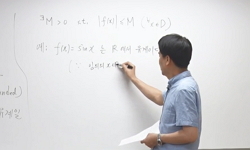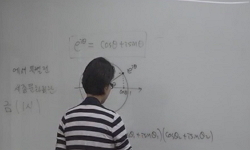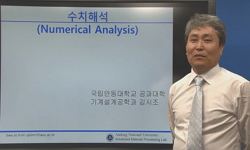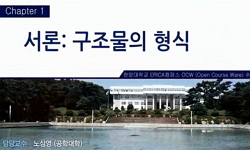2015년 독일 본에서 개최된 제39차 유네스코 세계유산위원회(39 COM 8B.14)에 서 ‘일본의 메이지 산업혁명 유산(Meiji Industrial Revolution): 철강, 조선 및 탄광’ 을 세계유산으로 등재를 결정하였다....
http://chineseinput.net/에서 pinyin(병음)방식으로 중국어를 변환할 수 있습니다.
변환된 중국어를 복사하여 사용하시면 됩니다.
- 中文 을 입력하시려면 zhongwen을 입력하시고 space를누르시면됩니다.
- 北京 을 입력하시려면 beijing을 입력하시고 space를 누르시면 됩니다.
일제강점기 형성 유산의 가치 해석에 관한 연구 : 부여신궁 지하통로를 중심으로 = A Study on Value Interpretation of the Heritage Built in the Japanese Colonial Period : Focused on the Underground Passageway of Buyeo Shrine
한글로보기https://www.riss.kr/link?id=T15467366
- 저자
-
발행사항
서울 : 한국전통문화대학교 일반대학원, 2020
-
학위논문사항
학위논문(석사)-- 한국전통문화대학교 일반대학원 : 문화유산융합학과 문화유산융합학과 문화재관리학 전공 2020. 2
-
발행연도
2020
-
작성언어
한국어
- 주제어
-
발행국(도시)
충청남도
-
형태사항
26 cm
-
일반주기명
지도교수: 최종호
-
UCI식별코드
I804:44031-200000294816
- 소장기관
-
0
상세조회 -
0
다운로드
부가정보
국문 초록 (Abstract)
2015년 독일 본에서 개최된 제39차 유네스코 세계유산위원회(39 COM 8B.14)에 서 ‘일본의 메이지 산업혁명 유산(Meiji Industrial Revolution): 철강, 조선 및 탄광’ 을 세계유산으로 등재를 결정하였다. 이는 일본의 근대 산업의 발전상에 대한 탁월한 보편적 가치(OUV)를 인정받은 유산이지만, 한국인에게는 일제강점기 강제노역으로 많은 희생자를 낸 부정적 역사의 유산이다. 따라서 세계유산위원회에서는 등재 당시 해당 유산 전체의 역사를 알 수 있는 해석전략 마련을 권고하였다. 그러나 현재까지 일본 정부에서는 조선인 강제노동과 희생을 인정하지 않고 있다. 이에 국가 간의 역사적 갈등을 야기하는 부정적 역사 유산에 대한 해석의 중요성이 대두되고 있다.
1945년 광복이후로 한국에서 부정적 역사를 담고 있는 유산은 주로 일제강점기 형성된 것으로 그동안 민족에게 아픈 역사이자, 지역 발전을 저해시킨다는 주장으로 철거에 대상이었다. 그러나 최근 아픈 과거의 시간을 되돌아볼 여유가 생긴 국가로 발전하면서 목포, 군산 등에서 도시재생의 문화자원으로 활용되고 있다. 하지만 지금 까지 일제강점기 형성된 유산의 가치에 대한 해석은 미미하였다. 이를 극복하기 위해 서는 유산 해석을 체계적으로 수행해야 할 필요가 있다.
이러한 시대적 요구사항을 고려하여 본 연구는 2019년 8월 ‘일제강점기 형성 유 산의 보존가치 판단과 활용 방안을 모색하기 위한 공론화 토론회’를 통해 알려진 부 여신궁 지하통로를 대상으로 선정했다. 연구를 통해 전문가 FGI와 지역주민 설문조 사를 분석한 가치 해석으로 미래전망과 현재 요구되는 사회적 역할을 도출하였다.
대상의 가치 해석에 앞서 문헌연구를 통한 역사적 배경을 정리한 결과 일제강점 기 관폐대사(官幣大社) 부여신궁(扶餘神宮) 조영은 정치적으로 중일전쟁 이후 총동원 체제를 구축하기 위한 지배의 이데올로기를 바탕으로 고고학적 측면, 문화예술적 측 면, 도시계획적 측면, 관광적 측면 등 사회에 전반적인 영향을 끼쳤다. 그렇기에 현 재까지 부여신궁 조영과 관련하여 유일하게 그 장소를 지키고 있는 부여신궁 지하통 로는 일제의 치밀한 식민지 동화정책의 대표적 증거라고 할 수 있다. 현지조사 결과 부여신궁 지하통로는 특별한 안내시설이나 개방되어 있지 않아서 많은 이들이 인식하지 못하는 상태였다. 부여신궁 지하통로의 대부분은 부소산 삼충 사 보도블록 지하에 남아 있으며, 실측결과 입구 양 끝에 대한 길이는 약 87m이다. 시설물의 전체 높이는 약 218m, 전체 폭은 약 189m이며, 입구 정면의 높이는 약 186m, 입구 정면 폭은 약 107m로 추정된다. 잔존하는 부여신궁 지하통로는 지속가능한 보존과 활용을 위한 체계적인 정비를 통해서 지하통로의 출입체험이나 작은 규모의 부여신궁 전시공간으로 활용 가능성에 대한 공동체의 인식이 확산되고 있다.
가치 해석에 관한 전문성을 확보하고자 전문가 FGI(Focus Group Interview)를 진행했다. 그 결과 개방코딩(open coding)으로 총 45개 개념의 공통된 속성으로 19 개(놀이의 장소, 구조적 이해, 변천과정에 대한 이해, 설화, 상징적, 희소성, 역사적, 건축적, 교육적, 고도 부여 이미지, 현상유지, 개방, 교육적 차원, 고도 부여에 대한 고려, 본질적 역사 이해, 콘텐츠)의 하위범주 영역과 7개(직접경험 요인, 간접경험 요 인, 긍정적 요인, 부정적 요인, 보존방안, 활용방안, 전제조건)의 상위범주, 3개(부여 신궁 지하통로에 대한 기억, 보존 및 활용 가치 인식, 미래전망)가 도출되었다.
지역주민의 참여를 유도하고자 진행한 설문조사와 사전인터뷰 결과에서는 부여 내 의 일제강점기 역사 인식에 대한 세대별 양극화 현상이 나타났다. 지역주민의 상당수 가 대상을 인지하지 못하였지만, 보존 및 활용에 있어서는 비교적 많은 수가 긍정적 의견을 나타냈다. 설문조사의 보존가치의 결과 역사적 가치, 학술적 가치, 상징적 가치가 높게 나타났다. 이는 부정적 역사 기억을 중심으로 한일 역사적 갈등에 있어서 실증적 자료로 사회문화적 전시공간, 학술연구 등 상징적인 공간이라는 내재된 가치 에 중요성 두고 있는 것으로 사료된다. 활용가치로는 역사적 기억을 통한 잘못된 과 거에 대한 교육적 가치를 크게 부여하고 있었다.
미래전망으로는 보존 측면에서 현재의 상태 그대로 기억의 공간으로 묻어두거나, 시설물 입구를 개방하는 방법을 선택할 수 있다. 활용의 측면에서는 착취와 만행의 부정적 역사의 기억을 담은 아카이빙을 통한 스토리텔링으로 과거 역사에 대한 반성 을 이끌기 위해 콘텐츠나 전시적 효과가 적용된다면, 주민은 물론 국내외에 관광객에 교육의 장이 수 있을 것이다. 이는 고도 부여 이미지 훼손과 역사적 관점에서의 친일 논란의 가능성이 크다. 따라서 보존 및 활용에 있어서 역사적 당위성을 증명하기 위 해 유네스코 세계유산으로 등재된 고도(古道) 백제의 긍정적 역사와 일제강점기 형성 된 유산에 대한 공존 방안이 요구된다.
한일 국제적 역사 갈등에 있어서 일제강점기 형성 유산의 가치를 해석하는 것은 부정적 역사를 환기하여 국가 정체성 강화에 기여할 수 있다. 이때 유산의 담긴 의미 와 중요성은 주관적 기억에 매몰될 위험이 있어 특정집단의 선호도나 기호만 반영하 는 것이 아니라, 전문가와 지역주민과 같은 이해관계자를 넘어 대상 유산을 방문하는 모든 유산 공동체의 참여적 접근을 통한 집단 의사를 반영할 수 있는 포괄적 가치 해석을 모색해야한다.
일제강점기 형성 유산은 우리 역사에 있어서 부정적 대상이지만, 무조건 철거한다 는 것은 근대 역사적 기억과 현재의 연결을 끊는 행위라고 볼 수 있다. 그렇다고 해 서 이에 대한 공간적 활용의 측면을 지나치게 강조하게 된다면, 자칫 그 안에 담긴 부정적 기억이 미화될 가능성이 있다. 따라서 공간적 활용으로 창출되는 긍정성 너머 그 안에 담겨있는 일제의 식민지배라는 부정성을 함께 대면할 수 있도록 대상 유산 의 집단기억을 중심으로 유산을 둘러싸고 있는 유·무형의 통합적 가치 해석 전략이 필요하다. 이는 미래세대에게 역사적 과오를 반복하지 않는 교훈적 본보기이자, 서로 다른 역사적 견해를 수용한 합의에 도달점이라는 사회적 역할을 기대할 수 있다.
다국어 초록 (Multilingual Abstract)
The 39th UNESCO World Heritage Committee (39 COM 8B.14), which was held in Bonn, Germany in 2015, came to the decision to list the Meiji Industrial Revolution Heritage in Japan as a World Heritage site. While it is a heritage that has been recognized ...
The 39th UNESCO World Heritage Committee (39 COM 8B.14), which was held in Bonn, Germany in 2015, came to the decision to list the Meiji Industrial Revolution Heritage in Japan as a World Heritage site. While it is a heritage that has been recognized for its outstanding universal value (OUV) regarding the development of modern Japanese industries, it is also a negative historical heritage that caused countless Korean casualties due to forced labor. this, in turn has marked the events with a negative historical legacy. Therefore, the World Heritage Committee recommended that the entire history of the heritage be described at the time of registration. To this day, however, the Japanese government has yet to recognize the forced labor and sacrifice of the Koreans. Therefore, the importance of interpreting the negative historical legacy which once caused such tumulituous historical conflicts between the countries has become more prevalent in recent years.
The period of history with the most negative legacy since the 1945 liberation is mainly the Japanese
occupation. Even the regional govenrment was formed due to the people’s painful history. For some time, this history was ignored, with the aim of reducing the historical impact. However, as the country has recently developed into one that can afford to look back on its painful past, it is being used as a cultural resource for urban regeneration in Mokpo and Gunsan. So far, regarding the Japanese occupation, however, people have differing interpretations about the value of heritage formed mimiayeo. To overcome this, it is necessary to perform an analysis of heritage systematically.
In august 2019, the study called "the Japanese occupation and value of public opinion seeking the preservation of the heritage." Buyeo-gu, known as the underground passageway, was selected as the destination. Through the study, we derived the future prospects and social roles required through expert FGI analyses and surveys of local residents. Through the study of literature in regard to the analysis of the value of the historical background through the Japanese occupation resulted in the Buyeo Shrine (扶餘神宮) and Grand Shrine (官幣大社) by ambassador gwanpye joyeongeun a politically. A total of control system was used since the Sino-Japanese War ideologies based on the archaeological, cultural artistic side, and Urban Planning and tourism aspects, etc. This led to an overall influence in society. Therefore, the underground passageway of Buyeo Shrine, which is the only place that has been guarding the site in relation to the construction of Buyeo Shrine, is representative evidence of Japan’s meticulous colonial assimilation policy.
According to a local survey, the underground passageway of Buyeo Shrine was not recognized by many because it was not open to the public nor did it provide any information about its facilities. Most of the underground passageways of Buyeo Shrine remain underground in the sidewalk blocks of Samchung Temple in Bussosan, and the actual investigation found that the length between each entrance to be about 87 meters. The total height of the facility is estimated to be about 218 meters, the total width is about 189 meters, the front height of the entrance is about 186 meters and the front width is about 107 meters. The surviving underground passage of Buyeo Shrine is systematically readjusted for sustainable preservation and utilization, and the community is spreading awareness of the possibility of using it as an access experience for underground passageways or as a small exhibition space at Buyeo Shrine. To gain expertise in value analysis, we conducted a Focus Group Interview (FGI) of experts. As a result, 19 sub-categories (place of play, understanding of the structure, understanding of the transition process, narrative, symbolic, scarcity, historical, architectural, educational, educational, high-enrichment image, maintenance of the status quo, opening, educational dimension, consideration of altitude grant, the essential historical understanding, content), 7 low categories (Factors of direct experience, factors of indirect experience, positive factors, negative factors, conservation measures, utilization methods, prerequisites), and 3 upper categories (Memories of the Underground Passage of Buyeo Shrine, Preservation and utilization value awareness, future prospects) as common attributes of the total 45 concepts by open coding. Results of surveys and pre-interviews conducted to encourage local residents to participate, Japanese occupation within the given perception of history for the polarization of different generations. Although many of the local residents were unaware of the targets, relatively many expressed positive opinions about conservation and utilization. This is considered to be an empirical statistic for historical conflicts between Korea and Japan, focusing on negative historical memories, and placing importance on the inherent value of a symbolic space, such as a social and cultural exhibition space and academic research. Through historical memories, the value of utilization was incorrectly attributed withgreat educational value in the past. In the outlook for the future in terms of preservation, one can choose to bury a space of memory as it is in its present state, or open the entrance to a facility completely. In terms of utilization, storytelling through archiving, which will inherently preserve memories of the negative history of exploitation and atrocities, could provide an educational venue for tourists both at home and abroad as well as residents; but only if content or exhibition effects are utilized to lead to reflection on past history. This is highly likely to damage the image of the high-end image and cause pro-Japanese controversy from a historical perspective. Therefore, it is necessary to prove historical validity in preservation and utilization. The positive history of Baekje and its ancient capital city listed as a UNESCO World Heritage Site and For heritage formed Japanese occupation A plan for coexistence is required. Value of the formation of Japanese occupation in history a conflict and international legacies is to interpret the negative history, ventilation and can contribute to strengthening national identity. In this case, the significance and meaning of the legacy risks being buried in subjective memory. It does not only reflect preferences or preferences of specific groups, but it also goes beyond stakeholders such as experts and local residents Heritage is subject to drudge up negative memories in our history, but laid the foundation for Japanese occupation. Unconditional demolition can be seen as an act of cutting off modern historical memories and current connections. However, if you over-emphasize the use of space for this, There is a possibility that the negative memory contained within it could be glorified. So beyond the positives created by spatial utilization, let us face the negativity of Japanese colonialism. A strategy to interpret tangible and intangible integrated values surrounding the heritage is needed, focusing on the collective memory of the target heritage. This can be expected to serve as a moral example for future generations not to repeat historical errors, and to lead to an agreement that embraces different historical views.
다국어 초록 (Multilingual Abstract)
2015年にドイツのボン市で開催された第39回ユネスコ世界遺産委員会(39 COM 8B. 14)では、「明治日本の産業革命遺産(Meiji Industrial Revolution):製鉄・製 鋼、造船、石炭産業」の世界遺産登...
2015年にドイツのボン市で開催された第39回ユネスコ世界遺産委員会(39 COM 8B. 14)では、「明治日本の産業革命遺産(Meiji Industrial Revolution):製鉄・製 鋼、造船、石炭産業」の世界遺産登録が決定された。これは、日本近代産業の発展様 子に関して優れた普遍的価値(OUV)が認められたわけだが、韓国人にとっては、 日本植民地時代に強制労働で多くの犠牲者を出した負の歴史の遺産である。そのため 世界遺産委員会では、登録決定の際、歴史全体について理解できる説明戦略」の策定 を勧告した。ところが、日本政府は、現在も朝鮮人強制労働と犠牲を認めていない。 これに、国家間の歴史的葛藤を引き起こす負の歴史遺産の解釈について、その重要性 が台頭してきている。
韓国における負の歴史を含む遺産とは、主に日本植民地時代に形成されものであ り、1945年の光復後からこれまで、民族にとっては悲しい歴史であり、地域発展を阻 害するという主張もあり、撤去の対象とされていた。それが近年では、悲しい過去を 振り返る余裕がある国に発展してきたことから、木浦、群山などで都市再生の文化資 源として活用されている。しかし、今までの日本植民地時代に形成された遺産の価値 に関する解釈は微々たるものだった。これを克服するためには、遺産の解釈について 体系的に進めていくべきだ。
このような時代のニーズを踏まえた本研究では、2019年8月に「日本植民地時代に形 成された遺産の保存価値判断及び活用方案を模索するための公論化討論会」で紹介さ れた扶余神宮の地下通路を対象に選定した。研究を通じて、専門家FGIと地域住民ア ンケート調査の分析を行い、価値の解釈による将来の展望と、現在必要とされる社会 的役割を導き出した。 研究対象の価値解釈に先立ち、文献研究を通じて歴史的背景をまとめた結果、日本 植民地時代、官幣大社・扶余神宮の創建は、政治的には日中戦争以降総動員体制を構 築するための支配のイデオロギーに基づいて、考古学、文化芸術、都市計画、観光な ど社会のあらゆる分野に影響を及ぼした。そのため、現在も扶余神宮の造営に関して 唯一その場所を守っている扶余神宮の地下通路は、日本の緻密な植民地同化政策の代 表的証拠と言えるだろう。
現地調査の結果、扶余神宮の地下通路は、特別な案内施設があったり、開放されて いるわけではなかったため、多くの人々に認識されていない状態だった。扶余神宮地 下通路のほとんどは、扶蘇山三忠祠の歩道ブロック地下に残っており、実測結果、入 り口の両端の長さは約87mだった。施設の高さは約218m、幅は約189m、入口正面の 高さは約186m、入口正面の幅は約107mと推定される。現在残存している扶余神宮地 下通路は、持続可能な保存と活用のために、体系的なメンテナンスの上、地下通路の 体験や小規模の展示スペースとして活用できる可能性について、共同体の認識が広が りつつある。
価値の解釈に関する専門性を確保するべく、専門家FGI(Focus Group Interview)を行った。その結果、開放コーディング(open coding)によって、総45概念の共通 属性で、19つのサブカテゴリ領域(遊びの場所、構造的理解、変遷過程の理解、説 話、象徴性、希少性、歴史、建築、教育、古都・扶余のイメージ、現状維持、開放、 教育的次元、古都・扶余に関する考慮、歴史の本質的理解、コンテンツ)と7つの要 因(直接経験要因、間接経験要因、ポジティブ要因、マイナス要因、保存方法、活用 方法、前提条件)と3つの親カテゴリ(扶余神宮地下通路に関する記憶、保存と活用 価値の認識、今後の展望)が導出された。 地域住民の参加を誘導する目的で行ってアンケート調査とインタビューの結果では、 扶余市内で日本植民地時代の歴史認識について、世代別の二極化現象が現れた。ほど んどの地域住民は対象を認識していなかったが、保存と活用については、比較的多く のノンズウが肯定的な意見を示した。調査の結果、保存価値、歴史的価値、学術的価 値、象徴的価値が高く現れた。これは負の歴史の記憶を中心に日韓の歴史的葛藤にお ける実証的資料として、社会文化的展示スペース、学術研究など象徴的な場所という 固有の価値の重要性があるものと考えられる。活用価値では、歴史的記憶を通じて 誤った過去に関する教育的価値が大きく与えられていた。 今後の展望では、保存という観点から、現状のまま記憶に残された空間として置いと くか、施設の入り口を完全に開放する方法を選択することができる。活用の面では、 搾取と蛮行の負の歴史アーカイブを利用したストーリーテリングを通じて、過去の歴 史への反省を導くために、コンテンツや展示的効果が適用されれば、住民はもちろ ん、国内や海外観光客に対する教育の場となることも可能であろう。これは、古都・ 扶余というイメージの毀損や歴史的な観点からみると親日論議を呼ぶ可能性が大き い。よって、保存及び活用においては、歴史的当為性を証明するために、ユネスコの 世界遺産に登録され古都・百済の肯定的な歴史と日本植民地時代に形成された遺産の 共存案が要求される。 日韓の国際的な歴史葛藤における日本植民地時代に形成遺産の価値を解釈すること は、負の歴史に注意喚起を起こして国家のアイデンティティの強化に貢献することが できる。この時、遺産に込められた意味と重要性は主観的記憶によって埋もれるリス クがあるため、特定の集団の評価や選好のみを反映してはならず、専門家や地域住民 など利害関係者を越えて、当該遺産を訪問するすべての遺産共同体の参加型アプロー チを通じた集団意思の反映が可能な包括的価値の解釈を模索しなければならない。
목차 (Table of Contents)
- Ⅰ. 서론 1
- 1. 연구 배경 및 목적 1
- 가. 연구의 배경 1
- 나. 연구의 목적 3
- 2. 연구 대상 및 방법 6
- Ⅰ. 서론 1
- 1. 연구 배경 및 목적 1
- 가. 연구의 배경 1
- 나. 연구의 목적 3
- 2. 연구 대상 및 방법 6
- 가. 연구의 대상과 범위 6
- 나. 연구 절차와 방법 10
- 3. 연구의 추진체계 및 기대성과 12
- 4. 유산의 가치 개념 정의 16
- 가. 보존가치 16
- 나. 활용가치 20
- Ⅱ. 일제강점기 형성 유산의 가치 해석에 관한 이론적 고찰 24
- 1. 부정적 역사 유산의 개념 정의 및 연구 분석 24
- 가. 부정적 역사 유산의 개념 정의 24
- 나. 부정적 역사 유산에 관한 선행연구 검토 36
- 다. 부정적 역사 유산에 관한 새로운 접근 ·42
- 2. 일제강점기 형성 유산의 가치 인식 및 유산 해석 43
- 가. 일제강점기 형성 유산의 가치 인식 43
- 나. 일제강점기 형성 유산의 가치 체계 변화 55
- 다. 일제강점기 형성 부정적 역사 유산의 해석 68
- 3. 시사점 및 본 연구의 차별성 78
- Ⅲ. 일제강점기 형성 유산, ‘부여신궁 지하통로’ 역사적 배경 80
- 1. 관폐대사(官幣大社) 부여신궁 조영 배경 80
- 가. 일제의 식민지 신사 확장 80
- 나. 일제강점기 부여의 변화 87
- 2. 관폐대사(官幣大社) 부여신궁 조영 101
- 가. 부여신궁 조영 개요와 추진 과정 101
- 나. 부여신궁 조영 추진 기구 및 사무규정 109
- 다. 부여신궁 조영 근로봉사 111
- 3. 부여신궁 유ㆍ무형 유산의 역사적 의미 122
- Ⅳ. ‘부여신궁 지하통로’ 가치 해석을 위한 실증조사 및 분석 125
- 1. 국내외 유사 사례분석 125
- 가. 국내 128
- 나. 국외 129
- 2. 부여신궁 대상지 현황 134
- 3. 분석틀 및 조사설계 140
- 가. 전문가 대상 일제강점기 형성 유산 가치 인식 FGI 142
- 나. 지역주민 대상 일제강점기 형성 유산 가치 인식 설문조사 143
- 4. 전문가 FGI와 지역주민 설문조사 결과 및 분석 145
- 가. 전문가 FGI 결과 145
- 나. 설문조사 결과 및 분석 158
- 다. 부여신궁 지하통로 가치 해석 181
- 5. 일제강점기 형성 유산의 가치 해석 과제 및 전망 184
- Ⅴ. 결론 186
- 1. 연구 종합 및 의의 186
- 가. 연구 종합 186
- 나. 연구 의의 188
- 2. 학문적 한계 및 향후 과제 189
- 참고문헌·누리집 190
- Abstract 207
- 日文抄錄 212
- 부록 216












